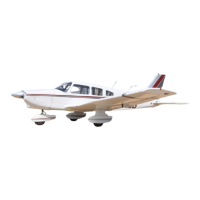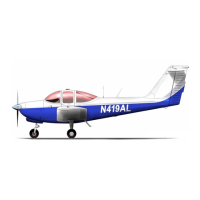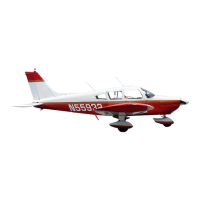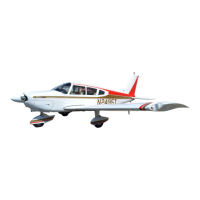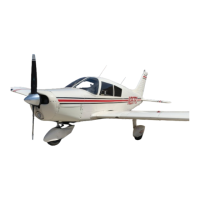THE NEW PIPER AIRCRAFT, INC.
PA-32-301FT / 301XTC
MAINTENANCE MANUAL
PAGE 15
Jun 1/03
4D19
51-00-00
(3) Application Of Liquid Safety Walk Compound
NO
TE: Newly painted surfaces shall be allowed to dry for 2.5 hours minimum prior to
application of safety walk.
NO
TE: Liquid safety walk compound shall be applied in an area free of moisture for a
period of 24 hours minimum after application. Do not apply when surface to be coated
is below 50°F. Apply liquid safety walk compound as follows:
(a) Mix and thin liquid safety walk compound in accordance with manufacturer’s
instructions on container.
(b) Coat specified surfaces with a smooth, unbroken film of liquid safety walk compound. A
nap type roller or a stiff bristle brush is recommended, using fore and aft strokes.
(c) Allow coating to dry for 15 minutes to one hour before recoating or touchup, if required
after application of initial coating.
(d) After recoating or touchup, if one, allow coating to dry for 15 minutes to one hour before
removing masking.
NOTE: Coated surface shall not be walked on for six hours minimum after application of
final coating.
4. Corrosion Control
Corrosion is the deterioration of metal by chemical or electrochemical attack. Water which is allowed to
remain on the aircraft and industrial pollution are the major causes of corrosion in aircraft. The two
general types of corrosion are:
-- Direct chemical attack. (i.e. spilled battery acid)
-- Electrochemical attack which requires a medium. (usually water)
The latter is the most common and is responsible for most forms of aircraft corrosion.
Since corrosion is a constant threat, the only effective method to control it is a routine of regular
inspection, cleaning, and surface refinishing.
A. Forms of Corrosion
The following are the most common forms of corrosion:
(1) Surface corrosion appears as a general roughening or pitting on the surface usually
accompanied by a powdery deposit of corrosion products. It may spread under the surface and
not be recognized until the paint or plating is lifted off the surface in small blisters.
(2) Dissimilar metal corrosion may occur when two dissimilar metals are contacting each other.
This type may be serious because it usually takes place out of sight. The only way to find it
before structural failure is by disassembly and inspection. Insulating is necessary between two
contacting dissimilar surfaces (2-3 coats of waterborne, chromated, fluid resistant, epoxy
primer (i.e. - PRC Desoto) or a coat of epoxy polyamide on each surface; plus a .003 thick
piece of vinyl tape if one of the surfaces is magnesium).
(3) Intergranular corrosion is difficult to detect in its early stages. When severe, it causes the
surface of the metal to exfoliate (flake or lift).
(4) Stress Corrosion is the result of sustained tensile stresses and corrosive environment. It
usually occurs in assemblies such as aluminum alloy bellcranks with pressed in bushings;
landing gear shock struts with pipe thread grease fittings, clevis pin joints and shrink fit parts.
(5) Fretting Corrosion takes place when two parts rub together, constantly exposing fresh active
metal to the corrosive effects of the atmosphere
(6) Filiform Corrosion is the appearance of numerous meandering thread-like filaments of
corrosion on the surface of various types of metal.
